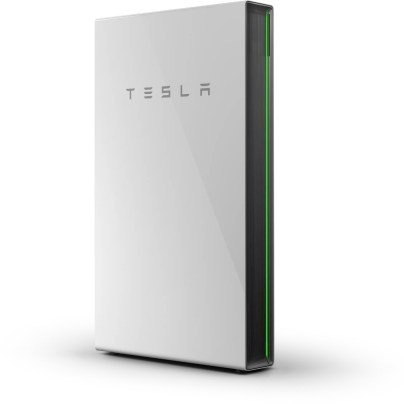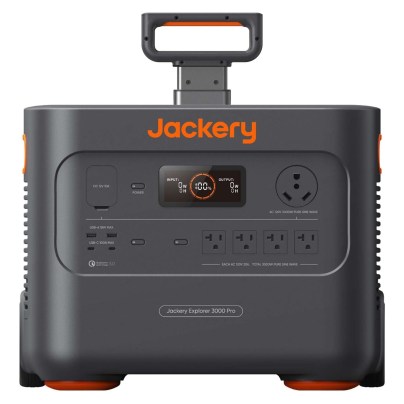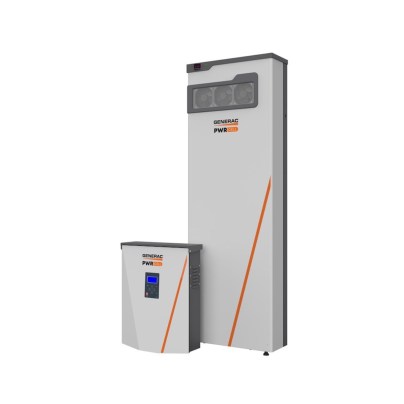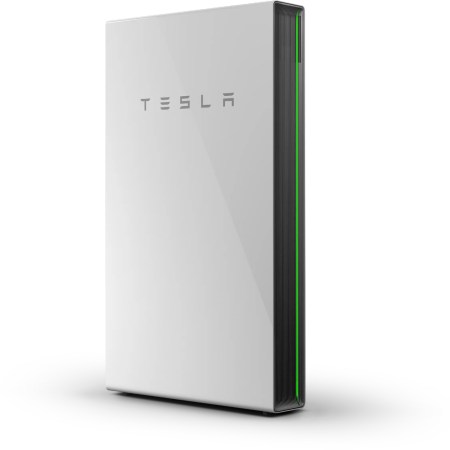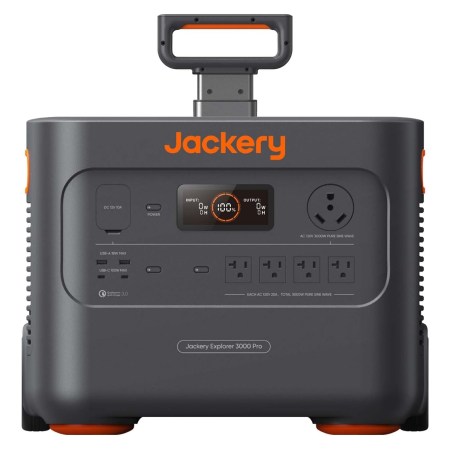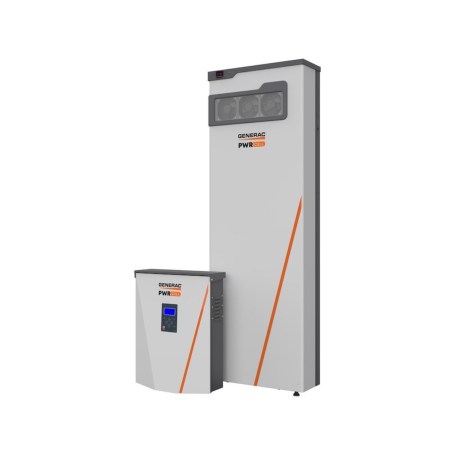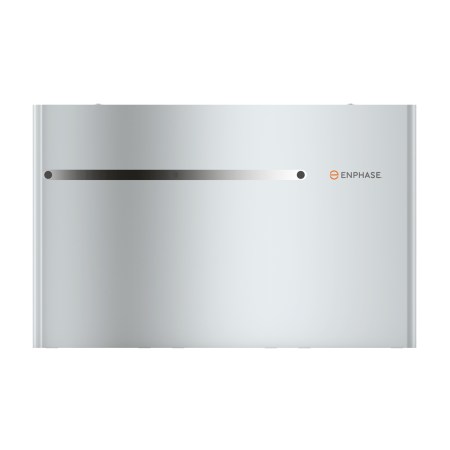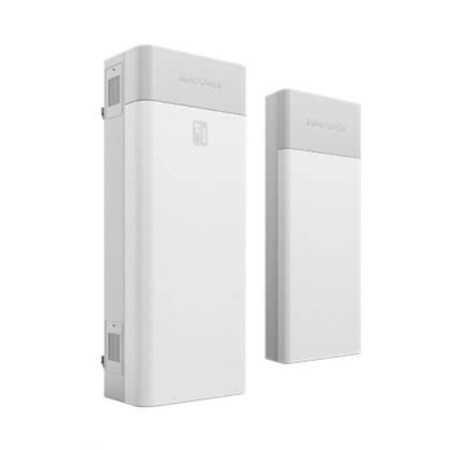We may earn revenue from the products available on this page and participate in affiliate programs. Learn More ›

Often, a good solar panel array produces more electricity than is needed at any given time, so solar batteries can be utilized to store the excess energy. This can be useful for power outages, nighttime use, and charging an electric vehicle overnight. When a solar battery storage system is installed correctly, owners can continue to benefit from the energy generated by their solar panels long after the sun has gone down.
Although this market is dominated by fewer than a dozen manufacturers, their products vary considerably. That’s why understanding the differences between each of the top contenders is crucial. To help provide that, this article offers an overview of how the technology works, and it also highlights a few of the best solar batteries for various needs.
- BEST OVERALL: Tesla Powerwall 2
- BEST BANG FOR THE BUCK: Jackery Explorer 3000 Pro Portable Power Station
- BEST MODULAR: Generac PWRcell
- BEST SMART: Enphase IQ Batteries
- BEST HIGH-CAPACITY: SunPower SunVault Storage
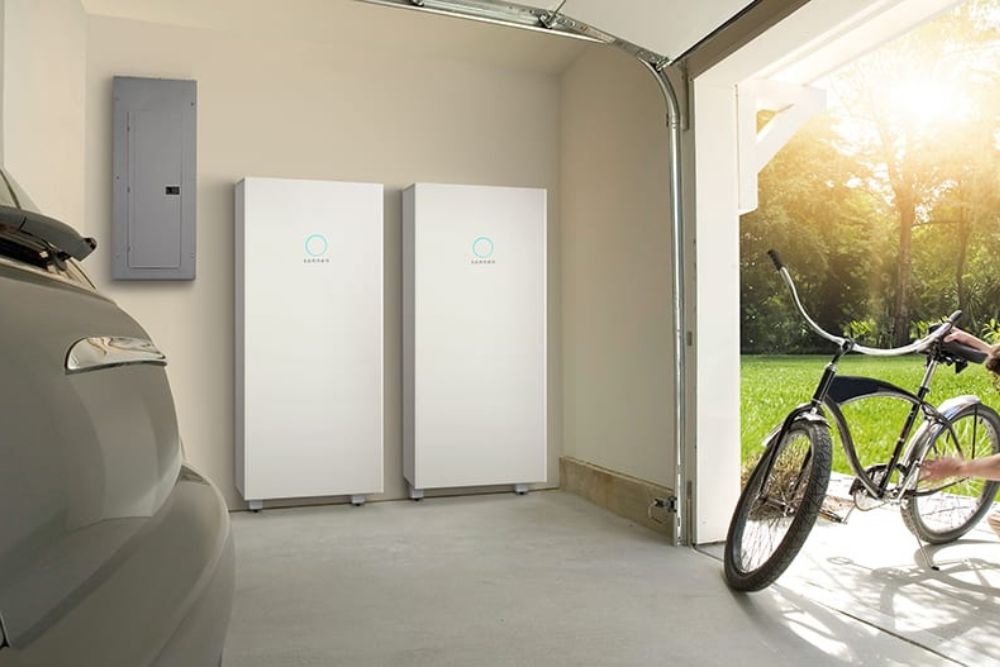
How We Chose the Best Solar Batteries
Solar system batteries can be surprisingly varied. Understanding their performance capabilities is vital to choosing one that aligns with a household’s energy needs and provides the most value for the money.
What we aimed to do with this guide was to explain the differences in straightforward terms and indicate the key qualities of each type of solar battery. We looked at solar battery chemistry, the amount of electricity they can store, and how efficiently they deliver it. Price is always a crucial factor, and in addition to the cost of the batteries themselves, there are solar battery installation costs to consider. Although experienced DIYers might consider tackling the job on their own, hiring an expert is recommended.
It’s important to point out that these devices may not be universally compatible with all solar panels. This is a key factor for those adding a new battery to an existing solar energy system. This is underlined by Alan Duncan, CEO of the nationwide solar panel installation company Solar Panel Network based in Denver, Colorado. “Compatibility between your solar battery and the rest of your solar energy system is paramount. Specifically, you need to ensure that your chosen battery is compatible with your solar inverter and solar panel configuration. Mismatched components can lead to inefficiencies and reduced energy storage capacity.”
Kraig Edelman, CEO of the HVAC, plumbing, and electrical system company Edelman Inc. in Champaign, Illinois, agrees. “Compatibility issues can lead to suboptimal performance and maintenance challenges.” He also recommends ensuring that the components meet safety standards and are installed by qualified professionals. “Proper installation and maintenance are essential for avoiding electrical hazards and ensuring the longevity of your system.”
Our Top Picks
We created this selection by doing in-depth research into all the leading solar battery providers. Each pick has been grouped by category, so together with the technical explanations that follow, this should provide a better understanding of each solar battery’s capabilities.
Best Overall
Tesla Powerwall 2
See ItProduct Specs
- Capacity: 13.5kWh
- Continuous power rating: 5kW
- Depth of discharge: 100 percent
Pros
- Sleek and efficient, with unlimited cycles and a useful app for management
- AC coupled for use with any new or existing solar panel installation
- Several Powerwall 2s can run together to meet high-power demands
Cons
- Expansion is expensive as it can only be done by installing complete units
Tesla was one of the first companies to produce solar batteries for home installation. In mass production since 2017, the Powerwall 2 builds on Tesla’s successes in the industry, and the result is a well-established, reliable solar battery. It is a versatile choice capable of being added to just about any new or existing solar energy system.
Each Tesla Powerwall 2 has a capacity of 13.5 kilowatt-hours (kWh) with a peak power of 7 kilowatts (kW) and a continuous output of 5kW. Depth of discharge (DoD), a measurement of the amount of stored power that can actually be used, is 100 percent and occurs without damage. It also features 90 percent round-trip efficiency. End-of-warranty performance is 70 percent, and unlike many competing solar batteries, there is no cycle limit.
Powerwall 2 units can be connected together, offering the potential for massive energy storage. The only real downside is that each unit has the same 13.5kWh capacity—they cannot be expanded in smaller increments.
Get the Tesla solar batteries at Tesla.
Best Bang For The Buck
Jackery Explorer 3000 Pro Portable Power Station
See ItProduct Specs
- Capacity: 3.024kWh
- Continuous power rating: 3kW
- Depth of discharge: Not provided
Pros
- A powerful and very versatile portable solar battery for RV, camping, and emergency use
- Multiple power outlets for all kinds of appliances and devices from fridges to laptops
- Can be charged from solar panels, ordinary household outlets, or even vehicles
Cons
- A cable is required to hook up to solar panels, but this is not included
For those who want a battery for a “cabin in the woods” setup, either the Sonnen Eco or Enphase IQ batteries would be reliable and relatively affordable options. But for those who want to go completely off-grid, then a
like this one is the ideal solution. The Jackery Explorer 3000 Pro can be used as an RV solar battery, for camping, or as an emergency backup at home. The idea is similar to using a
portable solar battery charger
to charge a phone or tablet on the go, but scaled up with enough muscle to power various appliances.
The Explorer 3000 Pro’s maximum capacity is 3.024kWh, and it delivers 3kW of continuous power. It is fitted with four 120-volt outlets for household appliances; four USB ports (two USB-A, two USB-C); a 12-volt DC outlet; and a 30-amp outlet for RVs.
The Jackery Explorer 3000 Pro can be charged via both solar and nonsolar methods. A portable solar array of six 200W panels can be used to charge it, and this will take around 3.5 hours. Wall charging with an AC adapter will take 2.4 hours. It can even plug into a vehicle cigarette lighter, though charging it this way will take a rather impractical 35 hours. The warranty is 5 years (3 years standard, 2 years extended) with 70 percent efficiency and a 2,000-cycle expected cycle life.
What our tester says: Michelle Larson, Bob Vila assistant editor and product reviewer, says this about the Jackery power station: “For those interested in a top-of-the-line portable power station with true off-grid capability, the Jackery Solar Generator 3000 Pro is hard to beat. It provides flexibility and quiet, sustainable power for everything from family camping trips to emergency situations. It’s perfect for anyone who wants to buy the best once rather than suffer through multiple inferior products that don’t last or simply don’t work well.”
Read our full review: Jackery Explorer 3000 Pro Portable Power Station
Get the Jackery solar batteries at Amazon, Lowe’s (with 1 panel included), or The Home Depot.
Best Modular
Generac PWRcell
See ItProduct Specs
- Capacity: 9 to 36kWh
- Continuous power rating: 4.5 to 9kW
- Depth of discharge: 84 percent
Pros
- Excellent expandability, so it can be tailored to almost any household capacity requirement
- High round-trip efficiency means less energy is lost between panels and house
- Protective cabinet designed for indoor or outdoor installation
Cons
- Modest depth of discharge; will not work with all solar panels
Generac is one of America’s best-known manufacturers of power generation equipment. Its PWRcell solar batteries are based on the same modular concept as the Sonnen Eco featured above, but the PWRcell batteries can provide a greater range of power.
PWRcell units have a capacity of 3kWh each, and the system requires a minimum configuration of 9kWh, meaning users will need to install a minimum of three batteries. However, additional batteries can be stacked in 3kW increments all the way up to a massive 18kWh in a single cabinet. Should the user require even more storage capacity, an additional cabinet can be added, providing anywhere from 27kWh to 36kWh of storage capacity. The cabinets themselves are designed to resist severe weather, so they can be installed outdoors if required. Its round-trip efficiency is the best on this list at an impressive 96.5 percent, though its DoD is not as stellar at 84 percent.
Generac offers a 10-year warranty with an end-of-warranty efficiency rating of 70 percent. The Generac PWRcell isn’t compatible with all
, so those with existing installations will want to carefully verify compatibility before ordering.
Get the Generac solar batteries at your local Generac dealer.
Best Smart
Enphase IQ Batteries
See ItProduct Specs
- Capacity: 3.36 to 10kWh
- Continuous power rating: 1.28 to 3.84kW
- Depth of discharge: 100 percent
Pros
- Automatically recognizes a power outage and has monitoring and control via app
- Modular system is competitively priced and can grow if user’s needs change
- Can also be linked to a gas generator for backup storage (additional controller required)
Cons
- Only works with Enphase inverters, so not compatible with all solar panels
The Enphase IQ is another popular line of solar batteries with modular capabilities, and they can be a very affordable option for small homes. Each of the batteries is light and compact, so it’s easy to find space for them. And despite their small size, each of these batteries is housed in a rugged casing that allows the user to install it outside, if preferred.
There are three sizes: the IQ3 at 3.36kWh capacity and 1.28kW output, the IQ5P at 5kWh capacity and 3.84kW output, and the IQ10 at 10.08kWh capacity and 3.84kW output. Multiple units can be stacked to meet higher demands, too. Their performance is impressive with 100 percent DoD and 96 percent round-trip efficiency. The warranty is 15 years with a 70 percent efficiency, though the cycle allowance is only 4,000.
The Enphase IQ solar batteries take smart features to a new level. Most rivals offer monitoring via an app, but Enphase also allows preferences to be set and adjusted. It can also link to the National Weather Service and automatically prioritize electricity storage if a storm is forecast.
Get the Enphase solar batteries at your local Enphase dealer.
Best High-Capacity
SunPower SunVault Storage
See ItProduct Specs
- Capacity: 13 to 39kWh
- Continuous power rating: 6.8 to 13.6kW
- Depth of discharge: Not provided
Pros
- Produced by a highly regarded manufacturer
- Part of a highly efficient all-in-one system that includes panels
- 10-year warranty with 70 percent end efficiency and no cycle limit
Cons
- Premium-priced solution that isn’t modular and only works with SunPower solar panels
Those who want a solar energy system that can generate enough power to supply a large home might want to take a close look at SunPower’s SunVault system. SunVault is only compatible with the company’s own solar panels, but that’s not entirely a bad thing, as they are recognized as among the most efficient available.
Users can choose between a single or double unit, each of which can be configured with four or six batteries. This means that SunPower’s SunVault system features a capacity of 13kWh at the low end all the way up to 39kWh at the high end. However, installation decisions need to be made at the outset as SunVault batteries are not modular. The single and double units’ continuous output is 6.8 and 13.6kW, respectively. SunPower does not provide depth of discharge measurements, which makes full comparison impossible, but the warranty is 10 years with an efficiency rating of 70 percent and no cycle limit.
Get the SunPower solar batteries at your local SunPower dealer.
Jump to Our Top Picks
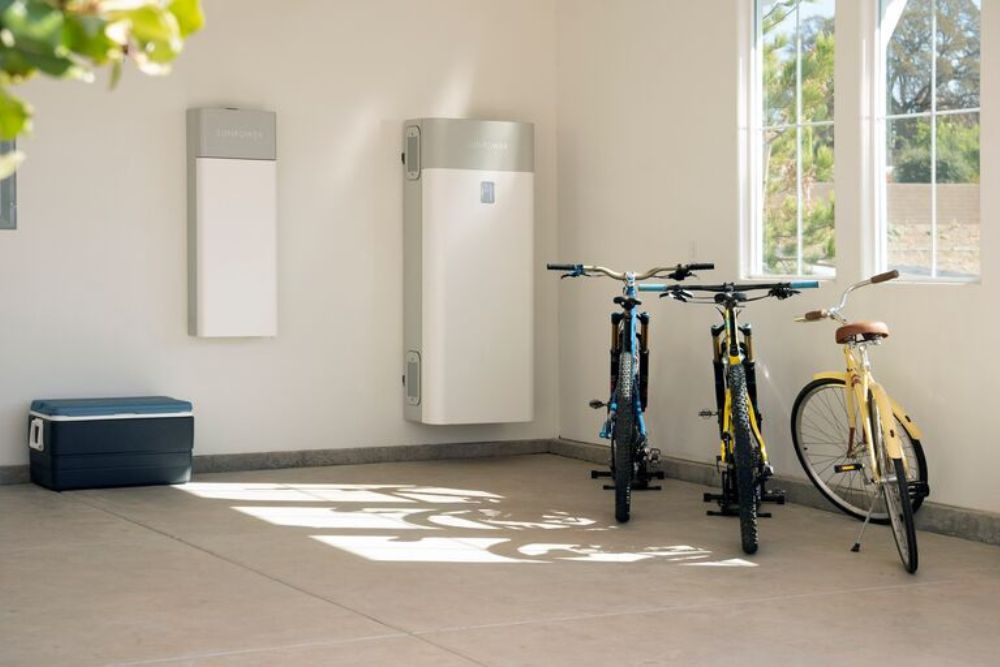
What to Consider When Choosing Solar Batteries
At the moment, solar battery backup requires a sizable investment. This investment will likely save money in the long term, but there are a number of important elements that need to be considered to ensure the money is well spent. With that in mind, the following are some important factors to weigh. It’s also a good idea to talk to a manufacturer or qualified installer to discuss your energy needs.
Type
There are four main types of solar rechargeable batteries: lead-acid, nickel-cadmium, lithium-ion, and flow. The first three are based on chemistries that the average person may well be familiar with, while the fourth, flow, is more recent technology.
Lead-acid batteries have been around for decades and are most often found in vehicles. This type of battery chemistry is well established and affordable, but its performance lags behind alternatives. Lead-acid batteries are no longer used commercially, but they are still popular with those who want to DIY their own “cabin-in-the-woods” system.
Nickel-cadmium batteries (Ni-Cd or NiCad) were the first type of rechargeable battery to hit the market, and they were used in early cordless power tools. A major benefit is that they can withstand extreme heat and cold. Unfortunately, they suffer from the “memory effect,” so their depth of discharge (and therefore performance) diminishes considerably over time. They are also highly toxic, and some countries have banned their use, though the U.S. is not one of them.
Lithium-ion batteries (Li-ion) are used in almost all solar systems right now. They are lighter, more compact, and more efficient than lead acid. They don’t suffer the memory problems of Ni-Cd batteries and are far less toxic. Lithium solar batteries require no maintenance and have a higher depth of discharge, and thus, a longer lifespan. The only potential problem is that they can overheat, which could present a fire risk. However, any professionally installed system should have safety systems that protect against this.
Flow batteries are an interesting development. The chemistry is water-based and doesn’t use heavy metals or rare earth minerals. They offer 100 percent depth of discharge, so every last bit of energy can be used, and they can operate within a wider-than-usual temperature range. Unfortunately, while industrial-scale flow-battery installations exist at the moment, this type of battery’s low storage capacity and slow discharge rate aren’t currently viable for home solar systems.
Capacity and Modularity
Capacity is the amount of energy a battery can store. With solar batteries, this is measured in kilowatt-hours. When shoppers are determining how much capacity their battery should have, they will want to take into account the amount of power their household uses, particularly at night, as well as the amount of energy their solar panels can generate.
For solar energy systems, modularity means that additional batteries can be purchased to expand the capabilities of the system (which is often called “stacking”). For example, a modular system might require a minimum of three solar batteries, each with a 3kWh capacity. This same system may allow the user to “stack” even more batteries if they’d like to, so they could add another three batteries to the first three for a total system capacity of 18kWh.
Some solar batteries are not designed to be modular. The ability to expand a solar battery bank system is important if consumers think their electricity needs will grow, or if they expect to add extra solar panels to boost energy output.
Power Rating
Solar batteries have two power ratings (also called power output). The first is peak output, which is the battery’s absolute maximum power output. Batteries cannot deliver peak output for long; after they reach the peak, they settle back to their continuous rating (or continuous output). This second measurement is the more important one because it’s a measurement of how much energy, in kW, the battery delivers for everyday use.
There’s often confusion between capacity (kWh) and power rating (kW). The first is the amount of energy the battery can store. The second is how much power it can supply to the electrical devices in the home. If the power rating isn’t high enough, there may be some limit on the appliances that the battery is capable of powering.
AC-Coupled vs. DC-Coupled
All solar panels create DC (direct current). However, electrical devices run off AC (alternating current). So a conversion (actually called an inversion) has to happen somewhere. To confuse the matter, solar batteries store energy in the form of DC.
With AC-coupled systems, DC from the solar panels goes through an inverter to produce AC for the home. The excess is inverted again to deliver DC for storage in the battery. With DC-coupled systems, there’s only one inversion needed when used for the home.
AC-coupled systems are more common and the technology is more established, leading to lower cost of purchase and installation in many cases. They are also compatible with most solar panels. DC-coupled systems are more efficient, as only one inversion is required; however, their compatibility is limited.
Depth of Discharge
Depth of discharge, given as a percentage, is the amount of stored power that can actually be used. It could also be called usable capacity. For example, if the battery has a capacity of 12kWh and a DoD of 90 percent, the true power available is 10.8kWh.
The best solar batteries have 100 percent DoD, though completely draining a solar battery isn’t always recommended as this can lead to damage that reduces the storage capacity over time. Some batteries are unaffected by this, while others have fail-safes to prevent overdischarge.
Round-Trip Efficiency and End of Warranty
After solar energy has been captured and stored in a battery, it will eventually be distributed for use. During this process, some energy is lost, even with the most efficient batteries. Round-trip efficiency is a measurement of how much of this energy is usable. In a perfect system, round-trip efficiency would be 100 percent, but that simply doesn’t happen. Every model in our selection rated higher than 80 percent, but a score above 90 percent is impressive.
Like all battery types, solar batteries degrade over time, losing capacity and efficiency in the process. End-of-warranty performance, again given as a percentage, is the expected efficiency of the battery when the warranty period (usually 10 years) has elapsed. For most solar batteries this will fall within the 60 to 70 percent range. Some manufacturers put a proviso on this, only ensuring the accuracy of these estimates if the battery has been charged less than a certain number of times. But typically, this charging cycle limit is 5,000 (and sometimes more), which averages more than once per day.
The Advantages of Owning a Solar Battery
In many regions, the power company will trade excess solar panel production for credits against an energy bill, so it could be argued that a battery is not always necessary. But there’s a catch. The power company will likely not pay users as much for the electricity they generate as it will charge them for the energy they pull from the grid, so the balance is not in a user’s favor. Additionally, if owners produce more than they consume, they’ll rarely, if ever, get credit. With that in mind, here are some advantages of owning a solar battery:
- Owners get to use all of the energy they produce. When the sun goes down, their home will use that stored battery power rather than drawing from the grid.
- The home may not lose power if there’s a storm or a provider fault interrupts supply.
- Users may be able to receive government incentives to offset purchase and installation costs.
- It may be possible to live without relying on the power grid, saving money and reducing carbon footprint.
FAQs
The article above provides lots of useful information and looks at a range of solar batteries in detail. However, during our research, we found some questions of a more general nature that may not have been answered fully in those sections. To remedy that, we’ve provided answers to the most common queries below.
Q. How many solar batteries are needed to power a house?
The number of solar batteries needed to power a house will vary depending on the amount of electricity normally created by your solar panels, the type of battery chosen, and your home’s power needs. Many homes only need one battery, but unfortunately, it isn’t as easy as giving a certain number of batteries for a particular square footage. It is possible to do the math yourself by calculating your consumption and comparing battery specifications, though it may be better to consult directly with one of the battery providers or a qualified installer.
Q. Which solar battery type has the longest lifespan?
Of those currently available, lithium-ion solar batteries have the longest lifespan. Recharge cycles have a big impact on how long a battery lasts, and lithium-ion batteries have a greater depth of discharge, so they need recharging less often. The warranty period for lithium-ion batteries is typically 10 years, which is a good indication—though they can certainly last longer.
Q. Will a solar battery help me save money on my electricity bill?
A solar battery will almost certainly save money on your electricity bill because you are in effect storing free power for use later on rather than demanding it from the grid. However, the initial cost of solar batteries means they’re not for everyone. Once again, it’s a question of doing the math or talking to an expert to determine if it’s a smart decision for your household.
Why Trust Bob Vila
Bob Vila has been America’s Handyman since 1979. As the host of beloved and groundbreaking TV series including “This Old House” and “Bob Vila’s Home Again,” he popularized and became synonymous with “do-it-yourself” home improvement.
Over the course of his decades-long career, Bob Vila has helped millions of people build, renovate, repair, and live better each day—a tradition that continues today with expert yet accessible home advice. The Bob Vila team distills need-to-know information into project tutorials, maintenance guides, tool 101s, and more. These home and garden experts then thoroughly research, vet, and recommend products that support homeowners, renters, DIYers, and professionals in their to-do lists.
